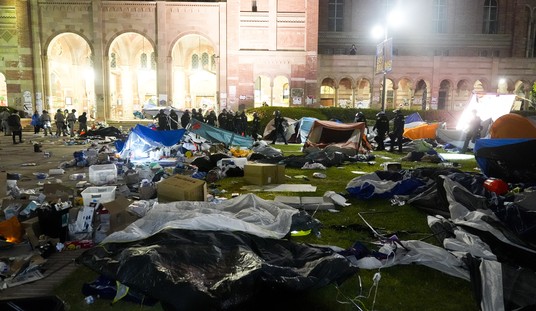In late July, the Free Syrian Army (FSA) opposition launched major attacks against the regime in that country’s civil war. This strategy seems to parallel that of the 1968 Tet offensive during the Vietnam war: demoralize the enemy and show that victory is possible, even if the offensive cannot hold onto Syria’s cities.
That means the war is certainly not over but may be entering a new phase. Already we’ve seen signs of this happening. A July 18 bombing killed several leading government security officials. This was joined by attacks on Syria’s two main cities Damascus and Aleppo. Just as the Vietnamese Communists began their offensive around the Tet holiday, the Syrian opposition’s offensive began just before the start of the Muslim holy month of Ramadan
As in Vietnam (namely Saigon), the Syrian rebels concentrated their offensive in centrally located neighborhoods, even getting reportedly close to Assad’s palatial residence. The goal was to convince foreign observers the opposition can win, and regime supporters that their cause is lost so they should consider fleeing or defecting
Of course, the Assad regime did not give up and showed its ability to fight back effectively. Even before the FSA offensive began, government forces reconquered the city of Douma, with elite Syrian Army units crushing FSA resistance. Next came the regime’s counter-offensive in Damascus, using every possible unit including helicopters and artillery. After a week of heavy fighting, the rebels had to pull out or were crushed.
Much like Aleppo, Syria, the South Vietnamese city of Hue was considered the country’s “second city.” North Vietnamese-Viet Cong forces were able to capture most of it until pushed out by a concentrated counterattack. It has been reported that the FSA committed as many as 5000 fighters inside Aleppo and the Syrian Army is massing troops near the city for its own counteroffensive
While the Assad regime has more willpower than did the U.S. side in Vietnam, it also has far fewer resources. Dependence on heavy weapons has generally confined Assad’s forces to holding major urban areas. Assad’s antiquated tanks and armored personnel carriers also now face an FSA possessing more effective weapons supplied by Saudi Arabia and Qatar, and then infiltrated into the country with U.S. and Turkish help
These arms include improvised explosive devices, rocket-propelled grenades, and anti-tank missiles. For its part, Syria’s army has to cover a large area against a rebel force that holds the initiative. The regime’s forces also lack the kinds of explosives disposal teams and defensive equipment needed to counter these arms.
All of this raises the following point: For the first time now, the regime and its soldiers must be realizing that they may hold out for many months, but they are not going to win this conflict. It seems likely, then, that Assad’s forces will be ground down by attrition.
While it’s unknown how many civilians and fighters the FSA lost, one estimate is 2,750, making July the deadliest month during the Syrian uprising, so far. There are also increasing reports of feared or actual ethnic massacres by both sides. Nonetheless, the FSA has won a major strategic victory. The war may go on for a long time but the final result is now far more predictable.
(Also read Syrian Rebels Renew Push in Damascus, Prepare for Regime Offensive in Aleppo)








Join the conversation as a VIP Member